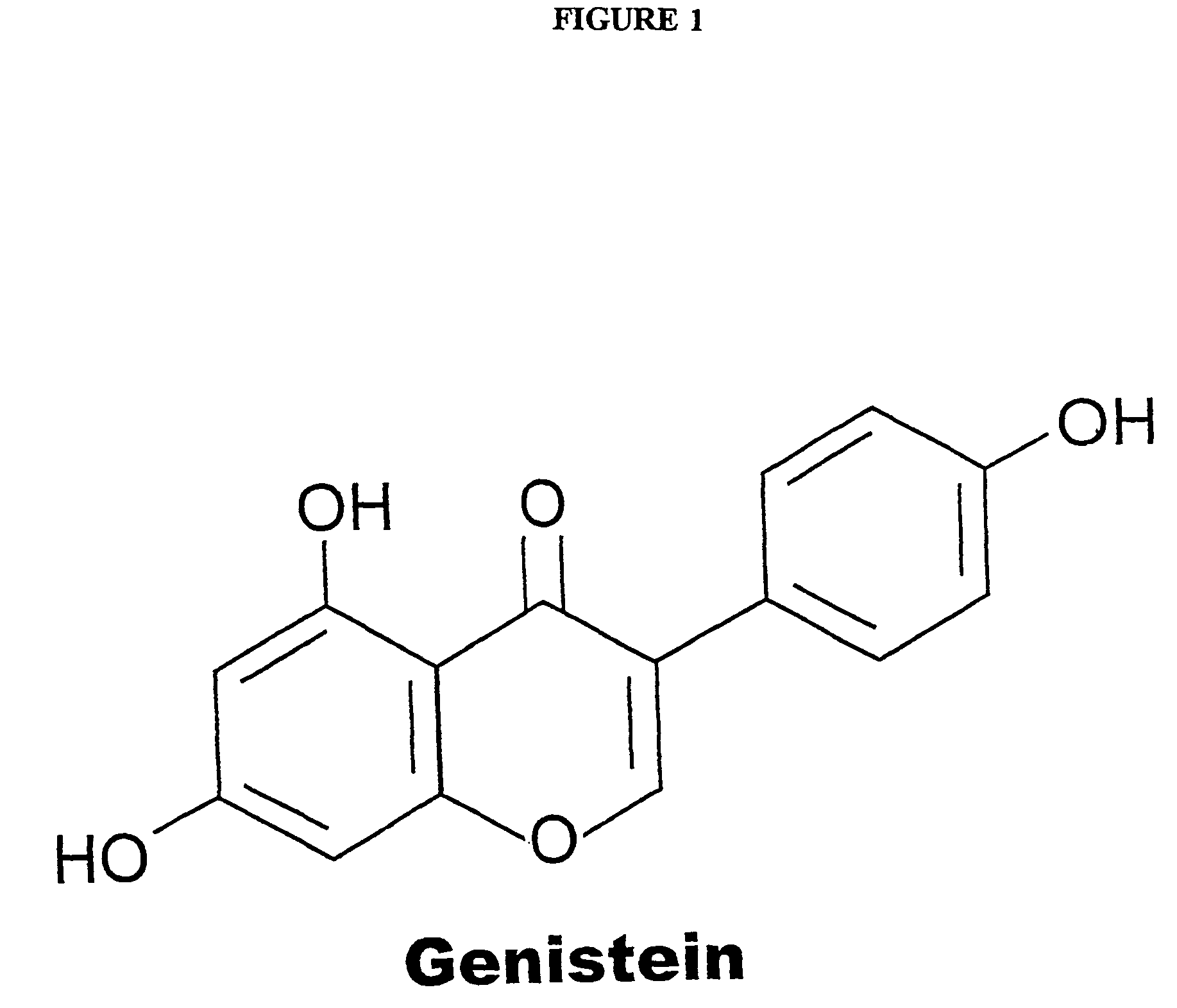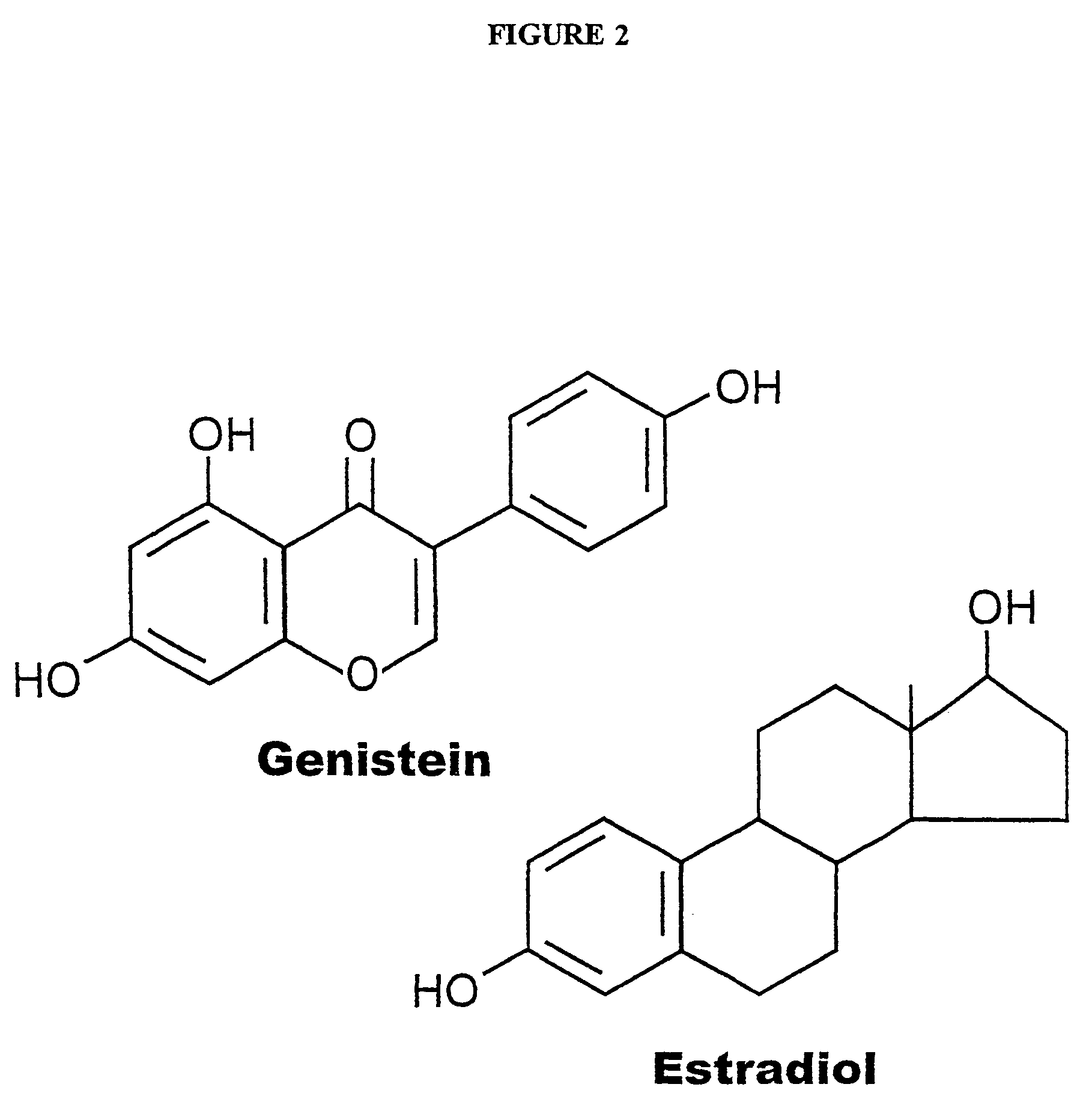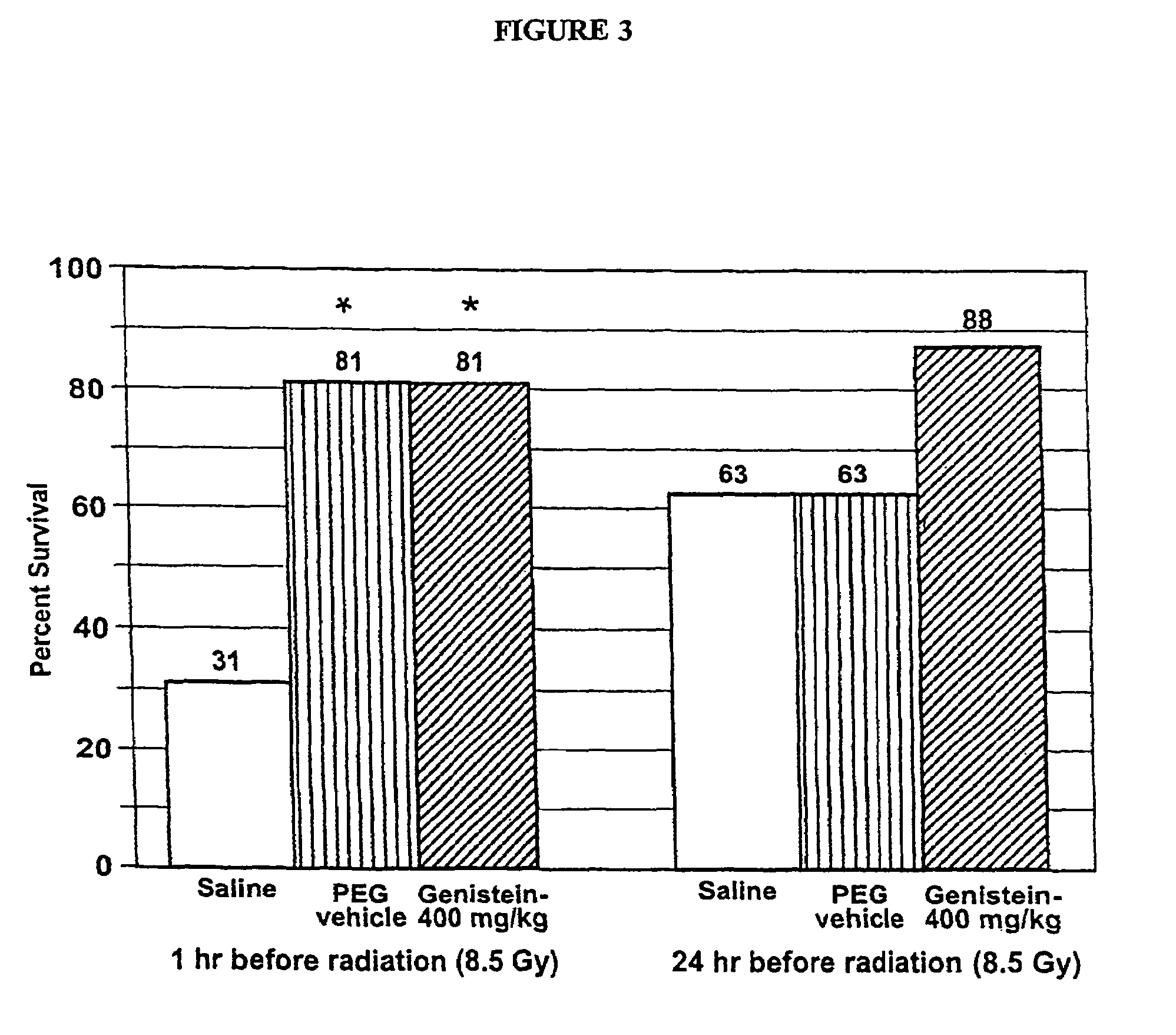Phytoestrogenic isoflavone compositions, their preparation and use thereof for protection against and treatment of radiation injury
- Summary
- Abstract
- Description
- Claims
- Application Information
AI Technical Summary
Benefits of technology
Problems solved by technology
Method used
Image
Examples
example 1
Protective Effects of A Single Oral Dose
[0099]This Example describes experiments to determine the protective effects of a single oral dose of genistein administered 1 or 24 hours before radiation mitigates radiation-induced mortality. The effects of genistein on radioprotection was evaluated after a single oral (po) dose of saline, PEG vehicle, or 400 mg / kg genistein (genistein-400) administered 1 hour or 24 hours before 8.5 Gy or 9.5 Gy cobalt-60 gamma radiation delivered at a dose rate of 0.6 Gy / min (N=16). Following irradiation, mice were returned to their home cages where survival was monitored for 30 days. The radiation LD50 / 30 for male CD2F1 mice administered saline was determined to be approximately 8.3 Gy. The 30-day survival rate was analyzed using a Chi square test.
[0100]As shown in FIGS. 3 and 4, the results demonstrated genistein did not enhance survival when given 1 hour before 8.5 Gy radiation. However, when given 24 hours before 8.5 Gy radiation, 63% of saline and veh...
example 2
Protective Effect of Multiple Oral Doses of Genistein
[0101]This Example describes experiments to determine the protective effect of multiple oral doses of genistein administered before or before and after radiation. In these experiments, mice (N=16 / group) received po 100 mg / kg or 400 mg / kg genistein for either 4 days before (pre), 4 days after (post), or 4 days before and 4 days after (pre+post) a lethal dose of gamma radiation (9.5 Gy). Animals in the pre-irradiation genistein groups received the PEG vehicle after irradiation, and the postirradiation genistein groups received the PEG vehicle before irradiation. Thus, all of the animals received eight daily oral gavage of either vehicle or genistein. The postirradiation dosing began 1 hour after irradiation. Two control groups that received either saline or PEG both before and after irradiation were also included. This resulted in a total of eight treatment conditions: 1) saline control; 2) PEG vehicle control; 3) genistein-100 pre;...
example 3
Subcutaneous Administration of Genistein
[0103]In this Example, experiments using another route of administration, namely a single subcutaneous injection of genistein administered 24 hours before radiation. In these experiments, mice received a single subcutaneous (sc) injection in the nape of the neck with either saline, PEG vehicle, genistein 100 mg / kg, or genistein 400 mg / kg, 24 hours before a lethal dose of radiation. Both these doses of genistein were demonstrated to be nontoxic using the sensitive locomotor activity test, as described herein.
[0104]Of the control mice that received saline or PEG vehicle, only 13% and 6%, respectively survived 30 days after total body radiation exposure. In contrast, significantly more mice survived in the groups that received a single dose of genistein, as indicated in FIGS. 12 and 13. Indeed, 69% of mice in the genistein-100 group survived, while 81% of those mice receiving genistein-400 survived. These results clearly demonstrate that a single...
PUM
| Property | Measurement | Unit |
|---|---|---|
| Time | aaaaa | aaaaa |
| Time | aaaaa | aaaaa |
| Mass | aaaaa | aaaaa |
Abstract
Description
Claims
Application Information
 Login to View More
Login to View More - R&D
- Intellectual Property
- Life Sciences
- Materials
- Tech Scout
- Unparalleled Data Quality
- Higher Quality Content
- 60% Fewer Hallucinations
Browse by: Latest US Patents, China's latest patents, Technical Efficacy Thesaurus, Application Domain, Technology Topic, Popular Technical Reports.
© 2025 PatSnap. All rights reserved.Legal|Privacy policy|Modern Slavery Act Transparency Statement|Sitemap|About US| Contact US: help@patsnap.com



